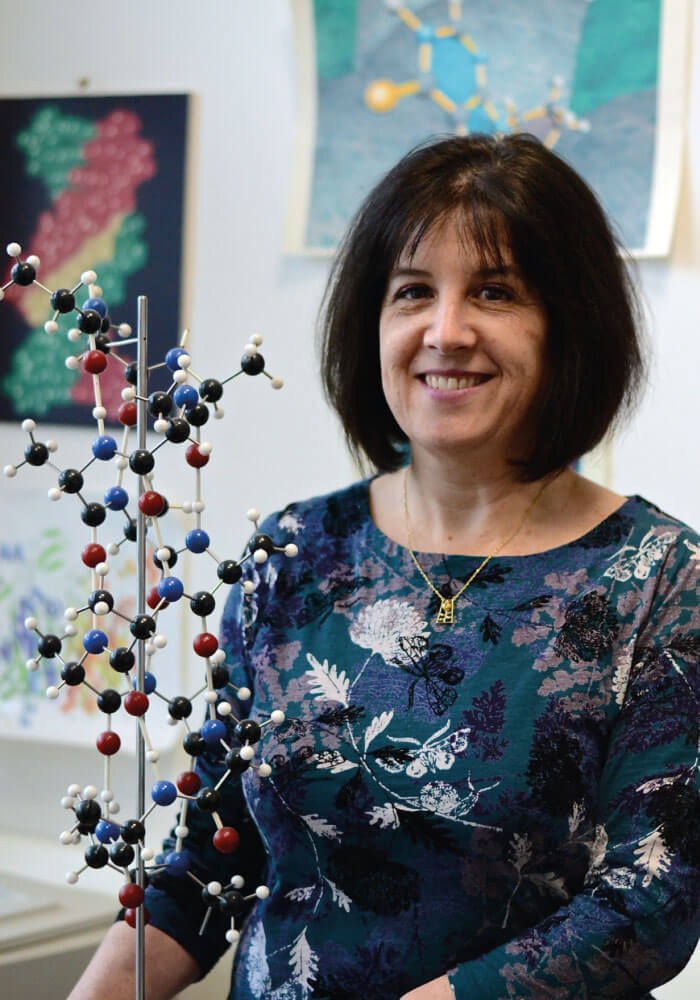Unless a concerted effort is made to control the spread of TB, the disease will kill 28 million people by 2030 and the associated cost burden will be one trillion USD – a heavy toll (1). Here, I speak to Lydia Tabernero, Professor of Structural Biology and Drug Discovery at the University of Manchester, UK, about the current challenges of treating TB.
How can we better control TB?
With airborne transmission, poor treatment options and subpar disease management all playing a role in the spread of TB, trying to zero in on a single approach to the control of the infection is impossible. Over 1.7 million lives are lost to this disease each year and it is becoming increasingly apparent that a layered approach to disease management makes sense.
I personally believe we have to take brave and bold steps. Substantial amounts of funding and resources are deployed into different disease programs; however, the same level of investment is lacking in infectious disease prevention and drug development, and this particularly affects how well we are able to tackle TB. High levels of funding are required to support research innovation and to develop new treatments, and thus to see a significant reduction in the burden placed upon economic, social and healthcare services. And, most importantly, we might be able to save more lives.
What threat does drug resistance pose to the treatment of TB?
Like drug-susceptible TB, drug-resistant TB is spread from person to person through airborne transmission. The treatment of drug-resistant strains takes longer, anywhere between 18 and 24 months, and requires hospitalization in isolation. Despite the efforts made by healthcare practitioners, drug-resistant TB cure rates are particularly poor: approximately 54 percent for multiple drug resistant TB and just 30 percent for extremely resistant TB, because second and third-line antibiotics are less efficacious.
Though the incidence of drug-resistant TB is low in more developed countries, drug-resistant TB is highly spread and the financial burden and risk of adverse side effects are still high. A substantial number of patients are left with kidney impairment, hearing loss and even psychosis as a result of taking the medications prescribed to treat the disease.
Tell me about your recent research on non-antibiotic approaches to the treatment of TB...
Last year, my team at the University of Manchester demonstrated the efficacy of the first non-antibiotic drug to treat TB in animals (2). We were able to design a compound that selectively inhibits MptpB, a virulence factor for M.tuberculosis, reducing the survival of multidrug-resistant tuberculosis strains in macrophages and enhancing the efficacy of first-line antibiotics. As the bacterial cells are not directly affected by the compound, they are unable to become resistant to treatment; human cells do not contain MptpB so our compound isn’t toxic to them. It's an exciting step forward for us as researchers, and we hope to take our work to human clinical trials stage within the next few years.
How would you like to see TB research progress over the next five years?
For decades, innovation and engagement have truly been lacking when it comes to TB. Governments, global institutions and pharma have all put the issue on the back burner for too long. By neglecting the importance of the issue, the lives of millions of patients are affected.
By engaging governmental bodies and pharmaceutical companies in changing the educational and pharmaceutical TB landscape, we could dramatically change the way in which patients are treated worldwide. The pharma industry is undoubtedly receptive to new ideas and approaches – as the rise of personalized medicine and AI clearly demonstrate. And it is imperative that they maintain an open-minded approach when it comes to new strategies to tackle TB. Though I do believe that the industry is paying more attention to this disease, we need more efforts on the educational front to make people aware of the risks and needs. It would be a huge step forward if an even greater spotlight was put on TB; after all, it is one of the leading causes of death worldwide.
World TB Day is on March 24 2019. To find out more please visit https://bit.ly/2BYjrTM

References
- TK Burki, The Lancet: Respiratory Medicine, “The global cost of tuberculosis” (2019). Available at https://bit.ly/2W5EOu1. Last accessed March 15 2019. Clare F. Vickers et al., Structure-based design of MptpB inhibitors that reduce multi-drug-resistant Mycobacterium tuberculosis survival and infection burden in vivo. Journal of Medicinal Chemistry, 2018, 61(18): 8337-8352.




